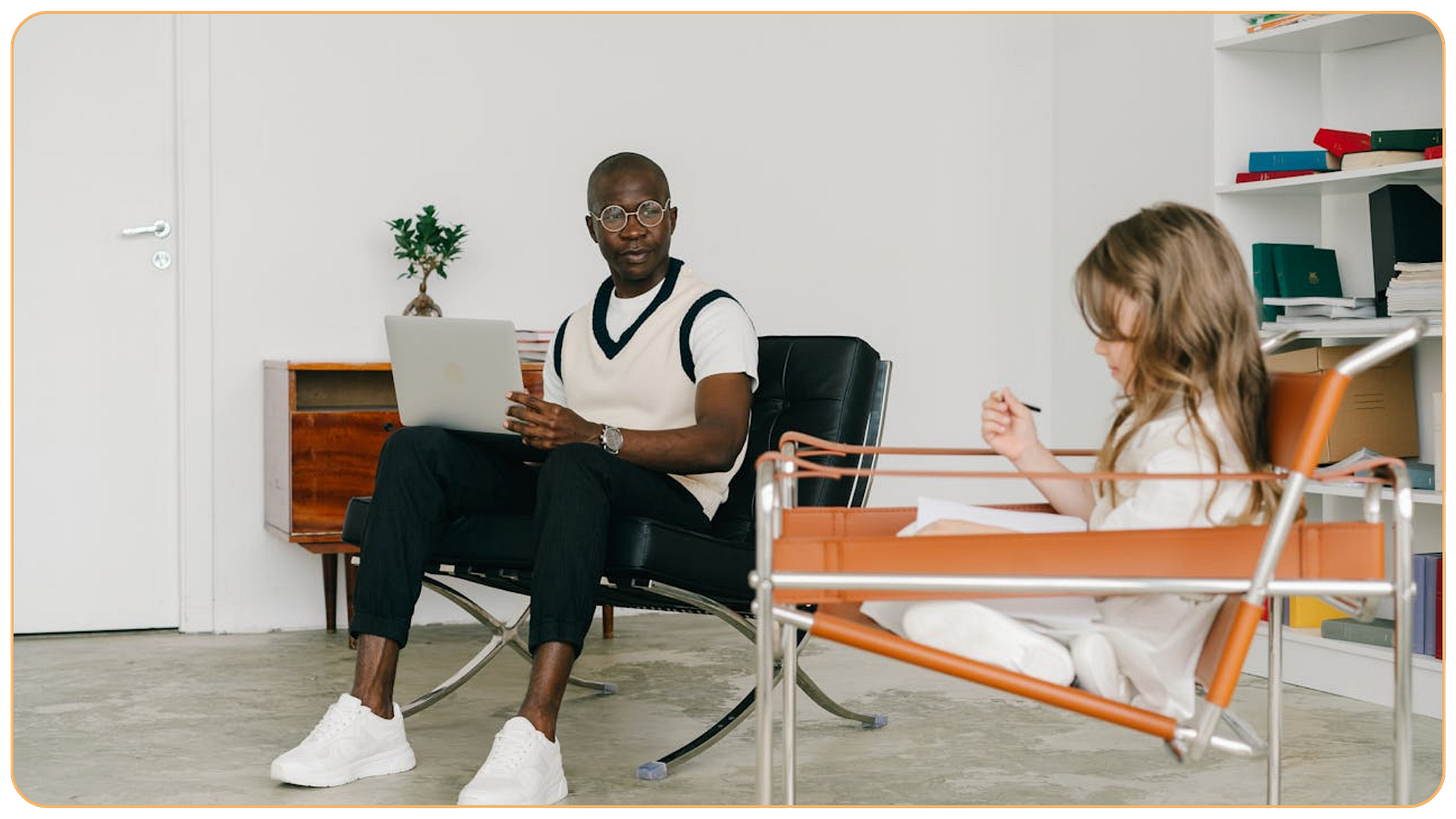How the ABC Model Transformed My Approach to My Autistic Son's Behavior
When behavior becomes a language you can understand—everything changes
🪄 Radically alchemizing motherhood reshaped by autism into a lifestyle I love — without settling. Expressions of authentic self-discovery & personal growth along this grounded venture beyond caregiving. About
I actually wrote this years ago, back when I still had only the single child—my son Caleb. It’s about an experience with a clinical exercise I had at his therapy clinic.
A large component of life with an autistic child is behavior modification. This subject is bound to be addressed at some point, and far better sooner, in my opinion from my own experience. There are actually several clinical models that can guide us and produce some much desired improvement in behavior! In this piece, I'm going to pull a picture from my real-life as an example as applied to using a clinical behavior modification approach on my own son. This will include some of the actual notes that I took down while being introduced to the model by a clinical psychological professional (behind the paywall), and other background information that I hope will be beneficial to you yourself.
Going forward, it is first necessary for us to re-frame our thinking about behavior: All behavior can be thought of as some type of communication, and for this model, the ABC Model, it is required that you consider it this way for your comprehension. As always, I'm no clinical professional, and this experience of mine cannot in any way replace the expert guidance of a qualified professional in the domain of autism. I'm a parent, which means that I'm always learning. I'll never know it all.
The experience of witnessing the expression of any type of behavior from your child can be thought of as existing in the form of a few individual parts, instead of one single behavior. The parts are creatively called “A”, “B”, and “C”. The source My ASD Child states about this:
"Behavior is observable and measurable (i.e., any action that can be seen or heard). An effective method of examining behavior is the ABC model:
A=Antecedent: The event occurring before a behavior (the event prompts a certain behavior)
B=Behavior: Response to the events that can be seen or heard
C=Consequence: The event that follows the behavior, which effects whether the behavior will occur again (when the behavior is followed by an unpleasant consequence, it is less likely to reoccur; when the behavior is followed by a pleasant consequence, it is more likely to reoccur)" 1
This is exactly the same way that this behavior modification model was taught to me during one session with a psychological professional on behalf of my son, by the way. And in my experience, I was actually given homework to do after the lesson. I was encouragingly directed to take some thoughtful time to observe my son's behavior analytically. This looked like me reflectively using a document of a table to take down notes on the occasions when certain behavioral situations with my son could be clearly applied to this ABC Model.
This was not a challenging assignment, at all, and it also gave me the feeling of possessing some degree of power and control over things as well. You know very well how rare this special feeling is! I very easily noticed patterns and structure along my son's behaviors, and this immediately felt like such a nice, visceral relief like weight lifting off of me... This was because I had actual knowledge about what I was seeing happen in front of me that I simply did not have before, and I could also identify in, some capacity, what I was actually seeing under the surface! I knew that once you can recognize something, you can begin to handle it. I felt like I was really getting to know, know my son for who he is from the very beginning, if you can relate at all.
And I can't put into words the feeling of hope warming again in my belly that was before cold and void.
I gladly filled in my table of notes in preparation for my next session with the psychologist. (I'll also have a link for you of a copy of the actual online document that I used to capture my notes and observations on!) And together with the psychologist, we spent the entire session brainstorming ways that I could incorporate small adjustments and proactive measures of intervention to help influence my son's behavior to align more with what is appropriate in all sorts of different situations. …If I recall correctly, this was one of the first behavior exercises that I performed with my son on my own, and also one of the first times that I witnessed him (quickly) make positive changes in response to actions that I was taking. It was nothing short of surreal to witness.
And I can't put into words the feeling of hope warming again in my belly that was before cold and void.
I want you to feel that same warm feeling. If you don’t right now, that’s okay. Just try to have faith in my true story that experiencing it is actually something attainable, and that you’re equally eligible to have it happen to you!




